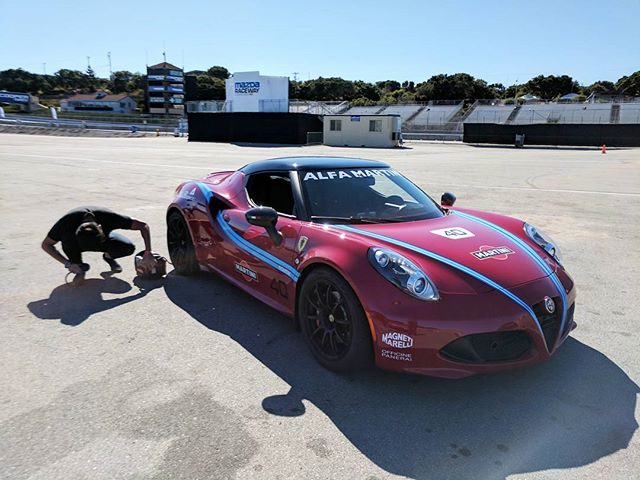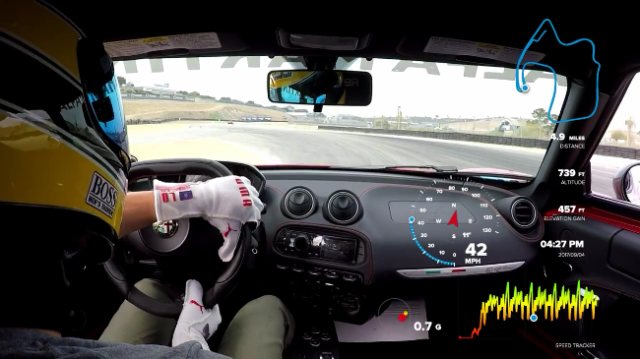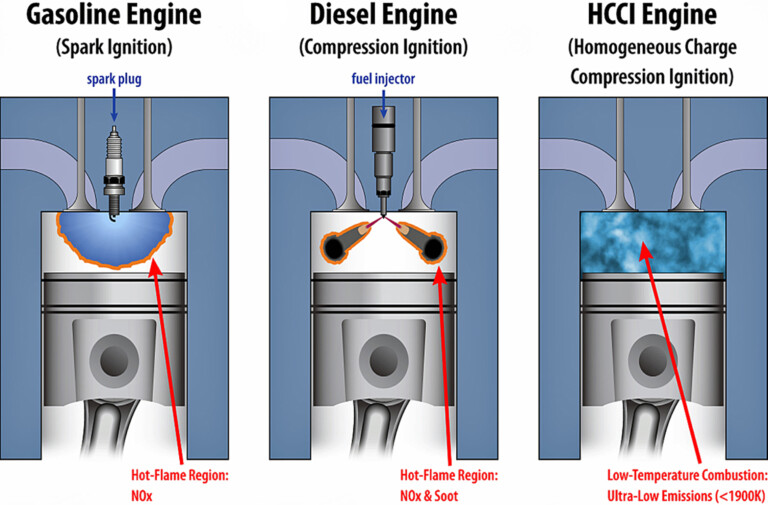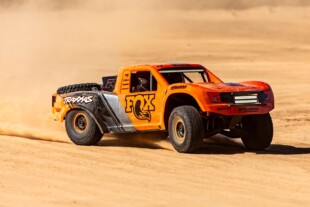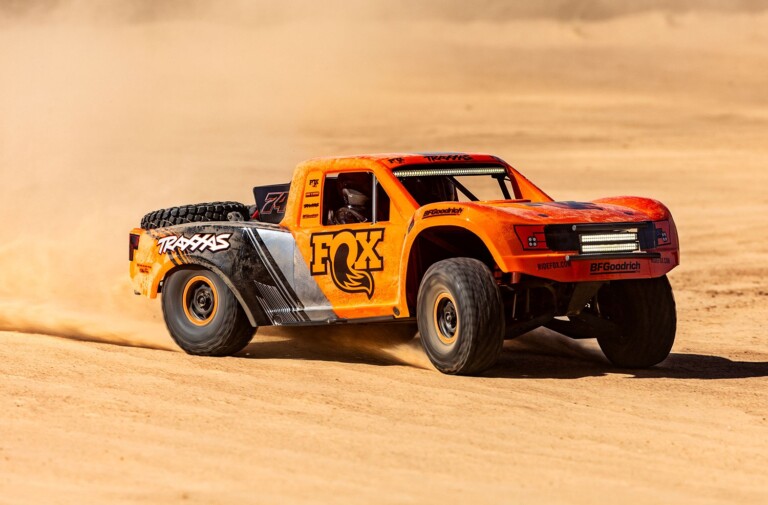Several months ago, I traveled down to Monterey with a friend to teach him how to drive Laguna Seca, and that morning, bleary-eyed at a coffee station in South San Francisco, he introduced me to a group of his friends. One of them drove a red Alfa 4C with homemade, Martini-esque stripes of blue tape running along the car’s flanks. They weren’t the most professional pieces of livery I’ve seen, but in a sense, they were a ringing endorsement.
Along with some serious semi-slicks at all four corners, what those homemade stripes suggested was that Alan was someone with an admiration for top-tier racing and wasn’t too concerned with fussy trim pieces. Basically, Alan’s choice in additions to his Alfa implied that he was someone mainly concerned with driving well.
Though we didn’t speak much throughout the course of the event, we all sat down for Vietnamese food afterwards and I picked his brain about what he drove previously, and how the diminutive Alfa compared in terms of technique required. Predictably, we spent so much time talking we were the last to finish our meals; he was able to describe the characters of his two track cars in great detail.
Alan previously drove a highly-tuned S2000 and put plenty of track miles on it. “I learned a lot of car control in the S2000,” he says, “to go fast, you have to push it 10/10ths, but in the Alfa you have to finesse it. I’ve learned to adjust my driving style to make smoother inputs to not unsettle the car too much.” The nervous, highly-adjustable platform obviously requires a delicate touch.
“If you are throttle happy, the tail is very happy. You just need to be prepare to countersteer and make the adjustments very quickly,” he warns. If the corrections aren’t made quickly and accurately enough, the car will rotate easily thanks the center of mass and the short wheelbase.
“It requires a lot of focus as you get a lot of steering feedback. To go fast, you have to drive precisely and be extra smooth with the throttle as the boost comes in,” Alan notes. The MR layout can generate stunning traction at the corner exit, but it’s also quite nervous up until the apex. As is evident from the footage above, he’s comfortable sliding the turbocharged, mid-engined Alfa and he does not hesitate to bend the car mid-corner, but getting the right amount of yaw isn’t easily done.
What’s obvious is how sensitive it is to throttle and steering inputs. When the car is loaded up in the middle of the corner, lifts off the gas result in mild oversteer, which can be exacerbated or minimized based on how the throttle is reapplied, how assertively they steer, or how long they remain off-throttle. Too much too soon, and the car snaps wildly. However, with a subtle blending of inputs, the rear end hooks up and fires the 4C out of the corner with an urgency that most FR cars struggle to match. In short, the mid-engine platform offers the driver more adjustability, but that comes at a price: it is very particular about the way it’s treated, and it does not coddle the clumsy driver.



